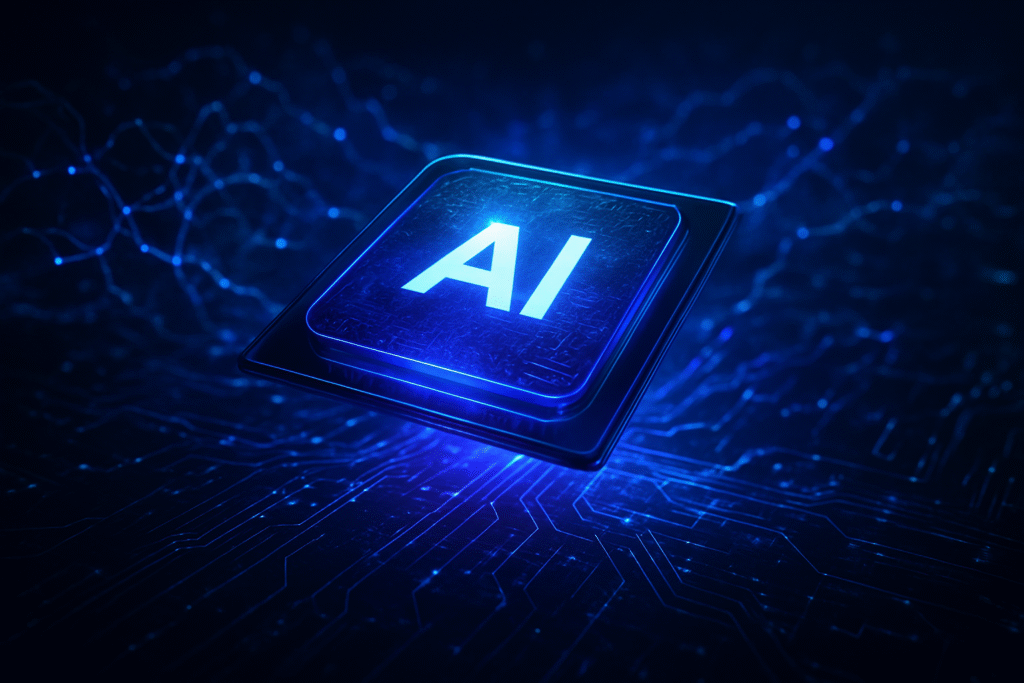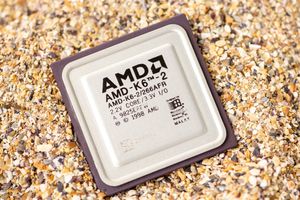
Sunnyvale, CA – October 7, 2025 – Advanced Micro Devices (NASDAQ: AMD) has dramatically escalated its presence in the artificial intelligence arena, unveiling an aggressive product roadmap for its Instinct MI series accelerators and securing a "transformative" multi-billion dollar strategic partnership with OpenAI. These pivotal developments are not merely incremental upgrades; they represent a fundamental shift in the competitive dynamics of the semiconductor industry, directly challenging NVIDIA's (NASDAQ: NVDA) long-standing dominance in AI hardware and validating AMD's commitment to an open software ecosystem. The immediate significance of these moves signals a more balanced and intensely competitive landscape, promising innovation and diverse choices for the burgeoning AI market.
The strategic alliance with OpenAI is particularly impactful, positioning AMD as a core strategic compute partner for one of the world's leading AI developers. This monumental deal, which includes AMD supplying up to 6 gigawatts of its Instinct GPUs to power OpenAI's next-generation AI infrastructure, is projected to generate "tens of billions" in revenue for AMD and potentially over $100 billion over four years from OpenAI and other customers. Such an endorsement from a major AI innovator not only validates AMD's technological prowess but also paves the way for a significant reallocation of market share in the lucrative generative AI chip sector, which is projected to exceed $150 billion in 2025.
AMD's AI Arsenal: Unpacking the Instinct MI Series and ROCm's Evolution
AMD's aggressive push into AI is underpinned by a rapid cadence of its Instinct MI series accelerators and substantial investments in its open-source ROCm software platform, creating a formidable full-stack AI solution. The MI300 series, including the MI300X, launched in 2023, already demonstrated strong competitiveness against NVIDIA's H100 in AI inference workloads, particularly for large language models like LLaMA2-70B. Building on this foundation, the MI325X, with its 288GB of HBM3E memory and 6TB/s of memory bandwidth, released in Q4 2024 and shipping in volume by Q2 2025, has shown promise in outperforming NVIDIA's H200 in specific ultra-low latency inference scenarios for massive models like Llama3 405B FP8.
However, the true game-changer appears to be the upcoming MI350 series, slated for a mid-2025 launch. Based on AMD's new CDNA 4 architecture and fabricated on an advanced 3nm process, the MI350 promises an astounding up to 35x increase in AI inference performance and a 4x generation-on-generation AI compute improvement over the MI300 series. This leap forward, coupled with 288GB of HBM3E memory, positions the MI350 as a direct and potent challenger to NVIDIA's Blackwell (B200) series. This differs significantly from previous approaches where AMD often played catch-up; the MI350 represents a proactive, cutting-edge design aimed at leading the charge in next-generation AI compute. Initial reactions from the AI research community and industry experts indicate significant optimism, with many noting the potential for AMD to provide a much-needed alternative in a market heavily reliant on a single vendor.
Further down the roadmap, the MI400 series, expected in 2026, will introduce the next-gen UDNA architecture, targeting extreme-scale AI applications with preliminary specifications indicating 40 PetaFLOPS of FP4 performance, 432GB of HBM memory, and 20TB/s of HBM memory bandwidth. This series will form the core of AMD's fully integrated, rack-scale "Helios" solution, incorporating future EPYC "Venice" CPUs and Pensando networking. The MI450, an upcoming GPU, is central to the initial 1 gigawatt deployment for the OpenAI partnership, scheduled for the second half of 2026. This continuous innovation cycle, extending to the MI500 series in 2027 and beyond, showcases AMD's long-term commitment.
Crucially, AMD's software ecosystem, ROCm, is rapidly maturing. ROCm 7, generally available in Q3 2025, delivers over 3.5x the inference capability and 3x the training power compared to ROCm 6. Key enhancements include improved support for industry-standard frameworks like PyTorch and TensorFlow, expanded hardware compatibility (extending to Radeon GPUs and Ryzen AI APUs), and new development tools. AMD's vision of "ROCm everywhere, for everyone," aims for a consistent developer environment from client to cloud, directly addressing the developer experience gap that has historically favored NVIDIA's CUDA. The recent native PyTorch support for Windows and Linux, enabling AI inference workloads directly on Radeon 7000 and 9000 series GPUs and select Ryzen AI 300 and AI Max APUs, further democratizes access to AMD's AI hardware.
Reshaping the AI Competitive Landscape: Winners, Losers, and Disruptions
AMD's strategic developments are poised to significantly reshape the competitive landscape for AI companies, tech giants, and startups. Hyperscalers and cloud providers like Microsoft (NASDAQ: MSFT), Meta (NASDAQ: META), and Oracle (NYSE: ORCL), who have already partnered with AMD, stand to benefit immensely from a viable, high-performance alternative to NVIDIA. This diversification of supply chains reduces vendor lock-in, potentially leading to better pricing, more tailored solutions, and increased innovation from a competitive market. Companies focused on AI inference, in particular, will find AMD's MI300X and MI325X compelling due to their strong performance and potentially better cost-efficiency for specific workloads.
The competitive implications for major AI labs and tech companies are profound. While NVIDIA continues to hold a substantial lead in AI training, particularly due to its mature CUDA ecosystem and robust Blackwell series, AMD's aggressive roadmap and the OpenAI partnership directly challenge this dominance. The deal with OpenAI is a significant validation that could prompt other major AI developers to seriously consider AMD's offerings, fostering growing trust in its capabilities. This could lead to a capture of a more substantial share of the lucrative AI GPU market, with some analysts suggesting AMD could reach up to one-third. Intel (NASDAQ: INTC), with its Gaudi AI accelerators, faces increased pressure as AMD appears to be "sprinting past" it in AI strategy, leveraging superior hardware and a more mature ecosystem.
Potential disruption to existing products or services could come from the increased availability of high-performance, cost-effective AI compute. Startups and smaller AI companies, often constrained by the high cost and limited availability of top-tier AI accelerators, might find AMD's offerings more accessible, fueling a new wave of innovation. AMD's strategic advantages lie in its full-stack approach, offering not just chips but rack-scale solutions and an expanding software ecosystem, appealing to hyperscalers and enterprises building out their AI infrastructure. The company's emphasis on an open ecosystem with ROCm also provides a compelling alternative to proprietary platforms, potentially attracting developers seeking greater flexibility and control.
Wider Significance: Fueling the AI Supercycle and Addressing Concerns
AMD's advancements fit squarely into the broader AI landscape as a powerful catalyst for the ongoing "AI Supercycle." By intensifying competition and driving innovation in AI hardware, AMD is accelerating the development and deployment of more powerful and efficient AI models across various industries. This push for higher performance and greater energy efficiency is crucial as AI models continue to grow in size and complexity, demanding exponentially more computational resources. The company's ambitious 2030 goal to achieve a 20x increase in rack-scale energy efficiency from a 2024 baseline highlights a critical trend: the need for sustainable AI infrastructure capable of training large models with significantly less space and electricity.
The impacts of AMD's invigorated AI strategy are far-reaching. Technologically, it means a faster pace of innovation in chip design, interconnects (with AMD being a founding member of the UALink Consortium, an open-source alternative to NVIDIA's NVLink), and software optimization. Economically, it promises a more competitive market, potentially leading to lower costs for AI compute and broader accessibility, which could democratize AI development. Societally, more powerful and efficient AI hardware will enable the deployment of more sophisticated AI applications in areas like healthcare, scientific research, and autonomous systems.
Potential concerns, however, include the environmental impact of rapidly expanding AI infrastructure, even with efficiency gains. The demand for advanced manufacturing capabilities for these cutting-edge chips also presents geopolitical and supply chain vulnerabilities. Compared to previous AI milestones, AMD's current trajectory signifies a shift from a largely monopolistic hardware environment to a more diversified and competitive one, a healthy development for the long-term growth and resilience of the AI industry. It echoes earlier periods of intense competition in the CPU market, which ultimately drove rapid technological progress.
The Road Ahead: Future Developments and Expert Predictions
The near-term and long-term developments from AMD in the AI space are expected to be rapid and continuous. Following the MI350 series in mid-2025, the MI400 series in 2026, and the MI500 series in 2027, AMD plans to integrate these accelerators with next-generation EPYC CPUs and advanced networking solutions to deliver fully integrated, rack-scale AI systems. The initial 1 gigawatt deployment of MI450 GPUs for OpenAI in the second half of 2026 will be a critical milestone to watch, demonstrating the real-world scalability and performance of AMD's solutions in a demanding production environment.
Potential applications and use cases on the horizon are vast. With more accessible and powerful AI hardware, we can expect breakthroughs in large language model training and inference, enabling more sophisticated conversational AI, advanced content generation, and intelligent automation. Edge AI applications will also benefit from AMD's Ryzen AI APUs, bringing AI capabilities directly to client devices. Experts predict that the intensified competition will drive further specialization in AI hardware, with different architectures optimized for specific workloads (e.g., training, inference, edge), and a continued emphasis on software ecosystem development to ease the burden on AI developers.
Challenges that need to be addressed include further maturing the ROCm software ecosystem to achieve parity with CUDA's breadth and developer familiarity, ensuring consistent supply chain stability for cutting-edge manufacturing processes, and managing the immense power and cooling requirements of next-generation AI data centers. What experts predict will happen next is a continued "AI arms race," with both AMD and NVIDIA pushing the boundaries of silicon innovation, and an increasing focus on integrated hardware-software solutions that simplify AI deployment for a broader range of enterprises.
A New Era in AI Hardware: A Comprehensive Wrap-Up
AMD's recent strategic developments mark a pivotal moment in the history of artificial intelligence hardware. The key takeaways are clear: AMD is no longer just a challenger but a formidable competitor in the AI accelerator market, driven by an aggressive product roadmap for its Instinct MI series and a rapidly maturing open-source ROCm software platform. The transformative multi-billion dollar partnership with OpenAI serves as a powerful validation of AMD's capabilities, signaling a significant shift in market dynamics and an intensified competitive landscape.
This development's significance in AI history cannot be overstated. It represents a crucial step towards diversifying the AI hardware supply chain, fostering greater innovation through competition, and potentially accelerating the pace of AI advancement across the globe. By providing a compelling alternative to existing solutions, AMD is helping to democratize access to high-performance AI compute, which will undoubtedly fuel new breakthroughs and applications.
In the coming weeks and months, industry observers will be watching closely for several key indicators: the successful volume ramp-up and real-world performance benchmarks of the MI325X and MI350 series, further enhancements and adoption of the ROCm software ecosystem, and any additional strategic partnerships AMD might announce. The initial deployment of MI450 GPUs with OpenAI in 2026 will be a critical test, showcasing AMD's ability to execute on its ambitious vision. The AI hardware landscape is entering an exciting new era, and AMD is firmly at the forefront of this revolution.
This content is intended for informational purposes only and represents analysis of current AI developments.
TokenRing AI delivers enterprise-grade solutions for multi-agent AI workflow orchestration, AI-powered development tools, and seamless remote collaboration platforms.
For more information, visit https://www.tokenring.ai/.





